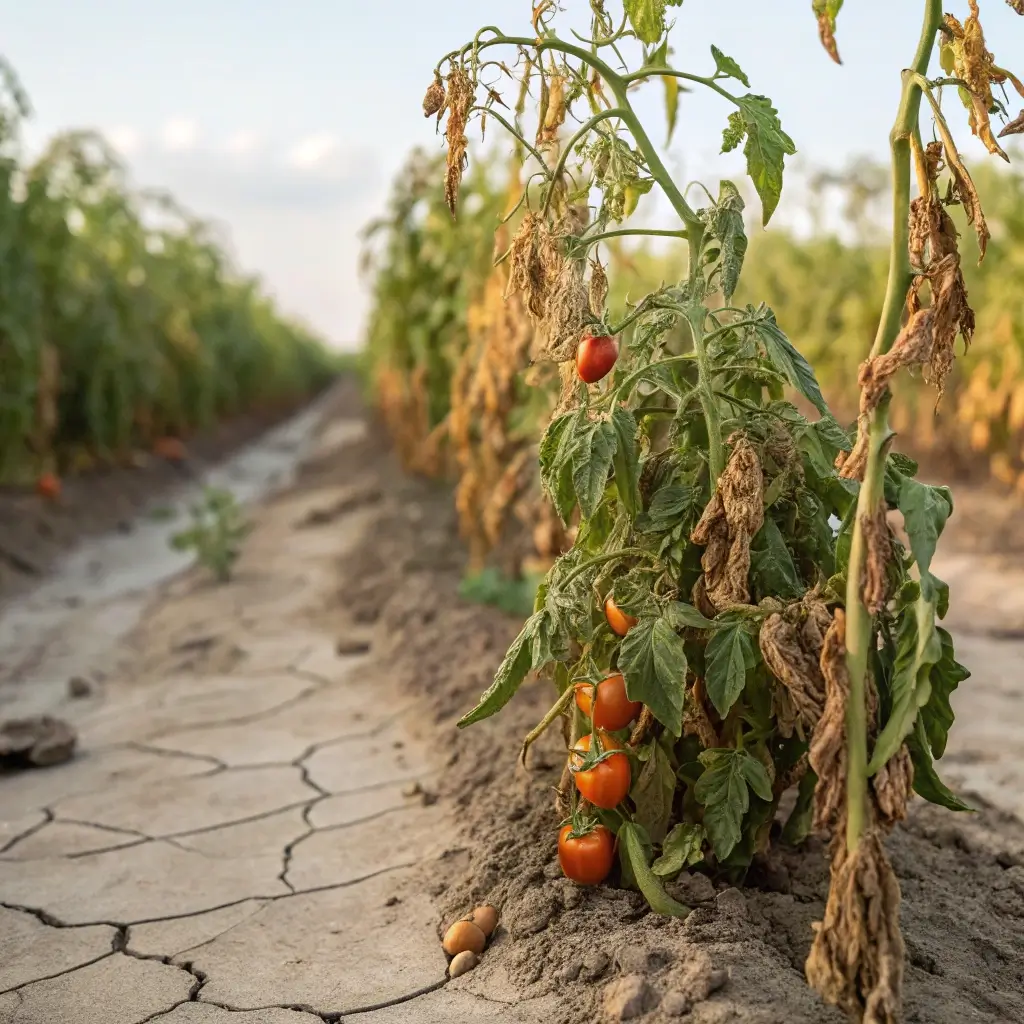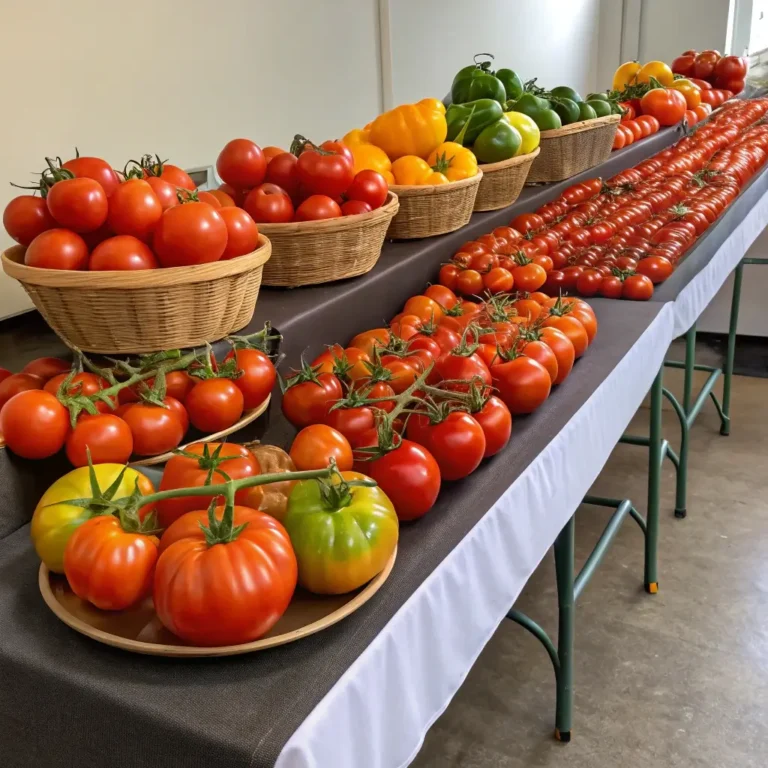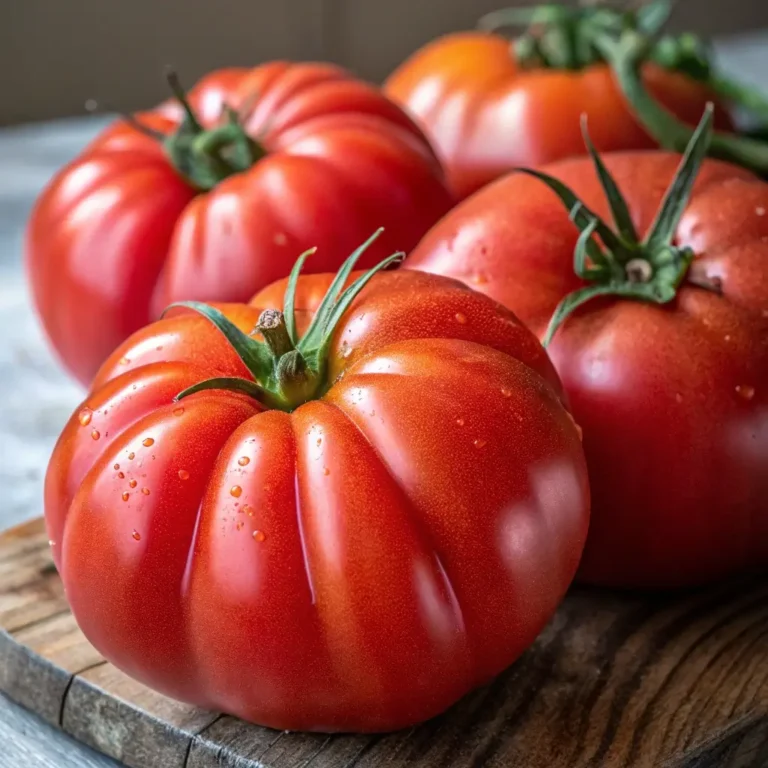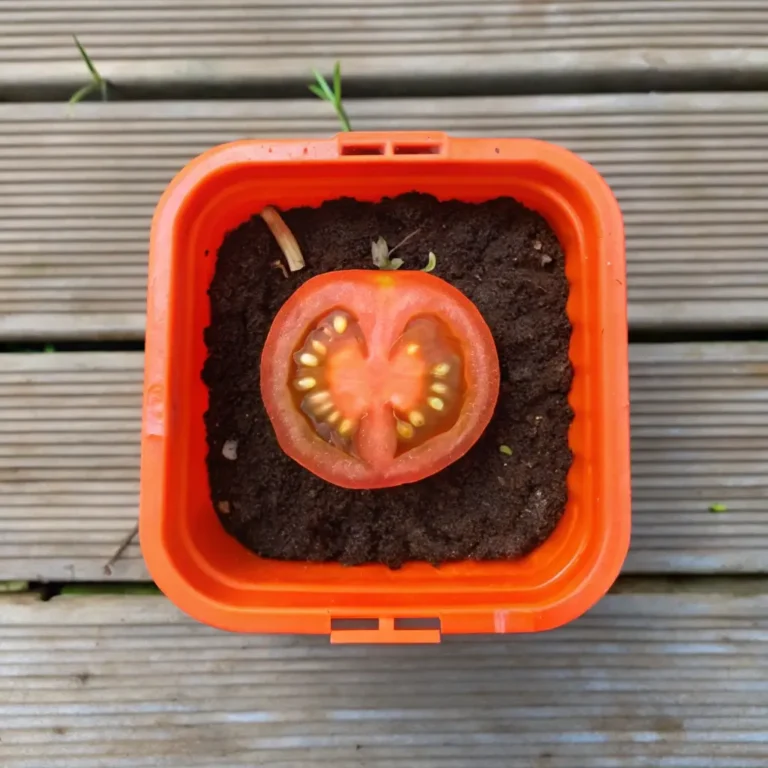How Long Can Tomato Plants Go Without Water? 7 Key Facts
Table of Contents
Introduction
Have you ever wondered if your tomato plants could survive while you’re away on a weekend trip? The surprising truth is that tomato plants, despite their juicy fruits, have varying degrees of drought tolerance depending on several factors. While conventional gardening wisdom suggests daily watering, research shows that established tomato plants can actually go between 2-5 days without water under moderate conditions. However, this timeframe changes dramatically based on growth stage, temperature, soil type, and humidity levels. Understanding how long can tomato plants go without water is crucial for maintaining healthy plants and planning your gardening schedule effectively. Let’s explore the science behind tomato plant hydration and discover practical insights that might challenge what you’ve always believed about watering your tomato garden.
Key Factors Affecting Tomato Plant Water Needs
- Plant maturity: Seedlings vs. established plants
- Environmental temperature: 70°F vs. 90°F+ conditions
- Soil type: Clay, loam, or sandy soil
- Container vs. ground planting: Container plants dry out faster
- Humidity levels: Arid vs. humid climates
- Mulching: Presence of moisture-retaining mulch
- Plant variety: Cherry tomatoes vs. beefsteak varieties
Timing: How Water Needs Change Throughout Growth Stages
- Seedling stage: 1-2 days maximum without water
- Vegetative growth: 2-3 days in moderate weather
- Flowering stage: 2-4 days, critical for fruit development
- Fruiting stage: 3-5 days for established plants with deep roots
- Late season: 4-7 days as plants naturally decline
These timings reflect optimal growing conditions, which is approximately 75°F with moderate humidity. At temperatures above 85°F, these timeframes can decrease by 30-50%, requiring more frequent watering to prevent stress.
Step-by-Step Guide to Managing Tomato Plant Watering
Assessing Your Plant’s Water Needs
Before determining how long your plants can go without water, perform a simple soil moisture test by inserting your finger 2-3 inches into the soil. If it feels dry at this depth, your plant needs water regardless of the calendar. Research from agricultural extension services shows that consistent soil moisture at 2-3 inches deep correlates with 25% higher tomato yields.
Establishing Deep Root Systems
Encourage tomato plants to develop drought resistance by watering deeply but less frequently. Apply 1-2 inches of water per session, allowing soil to dry slightly between waterings. This technique has shown to increase root depth by up to 40% compared to daily shallow watering, according to university agricultural studies.
Implementing Water Conservation Techniques
Apply 2-3 inches of organic mulch around plants to reduce evaporation by up to 70%. Consider using soaker hoses or drip irrigation systems, which can reduce water usage by 30-50% while maintaining optimal soil moisture levels. These methods are particularly effective during summer heat when tomato plants may otherwise require daily watering.
Recognizing Signs of Water Stress
Monitor for wilting leaves, especially during afternoon heat. Early signs of water stress include slight curling of lower leaves and slowed growth. Research indicates that tomato plants experiencing mild water stress recover fully if watered within 24 hours, while stress extending beyond 48 hours can reduce seasonal yield by 15-20%.
Nutritional Impact of Water Stress
Water availability directly affects the nutritional content of tomatoes. Studies show that moderate water stress can actually increase lycopene content by 10-15% and improve flavor concentration. However, severe drought stress reduces fruit size by 30-40% and can decrease vitamin C content by up to 25%. Finding the balance between water conservation and optimal nutrition requires attentive management throughout the growing season.
Healthier Alternatives for Watering Practices
- Rainwater harvesting: Collect rainwater in barrels to supply plants with chlorine-free, naturally pH-balanced water
- Grey water systems: Repurpose household water from non-toxic sources
- Smart irrigation controllers: Adjust watering based on weather conditions, reducing water usage by up to 40%
- Self-watering containers: Maintain consistent moisture for container plants while using 60% less water
Implementing these alternatives not only conserves water but also creates more resilient tomato plants that can better withstand temporary drought conditions.
Serving Drought Resilience to Your Garden
Create drought-tolerant tomato gardens by pairing your plants with companion herbs like basil and oregano, which have similar water requirements. Consider grouping plants with similar needs in hydrozones to maximize efficiency. Data from community gardens shows that strategic plant grouping can reduce overall water usage by 25-30% while maintaining optimal growth conditions.
Common Watering Mistakes to Avoid
- Overhead watering: Increases disease risk by 40% compared to ground-level watering
- Watering on a strict schedule: Ignores environmental conditions and actual plant needs
- Shallow watering: Creates weak, surface-level roots less capable of surviving drought
- Midday watering: Results in 30% higher evaporation rates than morning watering
- Failing to adjust for weather changes: Missing the critical 2-day window to increase watering during heat waves can reduce seasonal yield by up to 50%
Storing Water for Emergency Plant Care
Prepare for absences by setting up emergency watering systems such as wick irrigation using cotton rope and water reservoirs. These DIY systems can provide adequate moisture for up to 7 days, depending on conditions. For longer absences, self-watering bulbs or commercial drip systems can extend care for 7-14 days. Research shows that tomato plants recover better from occasional drought stress when they receive consistent care before and after the stress period.
Conclusion
Tomato plants can typically survive 2-5 days without water under moderate conditions, but this range varies significantly based on multiple factors including plant maturity, weather, and soil conditions. By understanding these variables and implementing proper watering techniques, you can develop more resilient plants while conserving water. The key is to observe your plants closely, respond to their specific needs rather than following a rigid schedule, and prepare appropriately for any planned absences. With these strategies, you’ll not only know how long your tomato plants can go without water but also how to build drought resilience for healthier, more productive plants.
FAQs
Can tomato seedlings survive a weekend without water?
Seedlings have shallow root systems and can typically only go 1-2 days without water. Before weekend trips, water thoroughly and consider creating a mini-greenhouse effect with plastic covering to retain moisture.
Will my tomato plants die if I don’t water them for a week?
Established plants in moderate weather (65-75°F) with mulched soil might survive a week, though they’ll likely show stress. In hot weather above 85°F, most tomato plants will experience significant damage or death after 5-7 days without water.
Does container size affect how often I need to water tomato plants?
Absolutely. Research shows that tomatoes in 5-gallon containers dry out approximately 40% faster than those in 10-gallon containers. Plants in containers generally require water every 1-3 days compared to every 3-7 days for in-ground plants.
How can I tell if my tomato plants need water without checking the soil?
Look for leaves that are slightly curled, dull in color, or wilting in the afternoon. Morning recovery from afternoon wilting suggests the plant is managing, but persistent wilting indicates critical water needs.
Does the type of tomato plant affect its drought tolerance?
Yes. Roma and paste tomato varieties generally exhibit 25-30% greater drought tolerance than large slicing varieties. Cherry tomatoes often show intermediate drought resistance but will quickly reduce fruit production when water-stressed.







